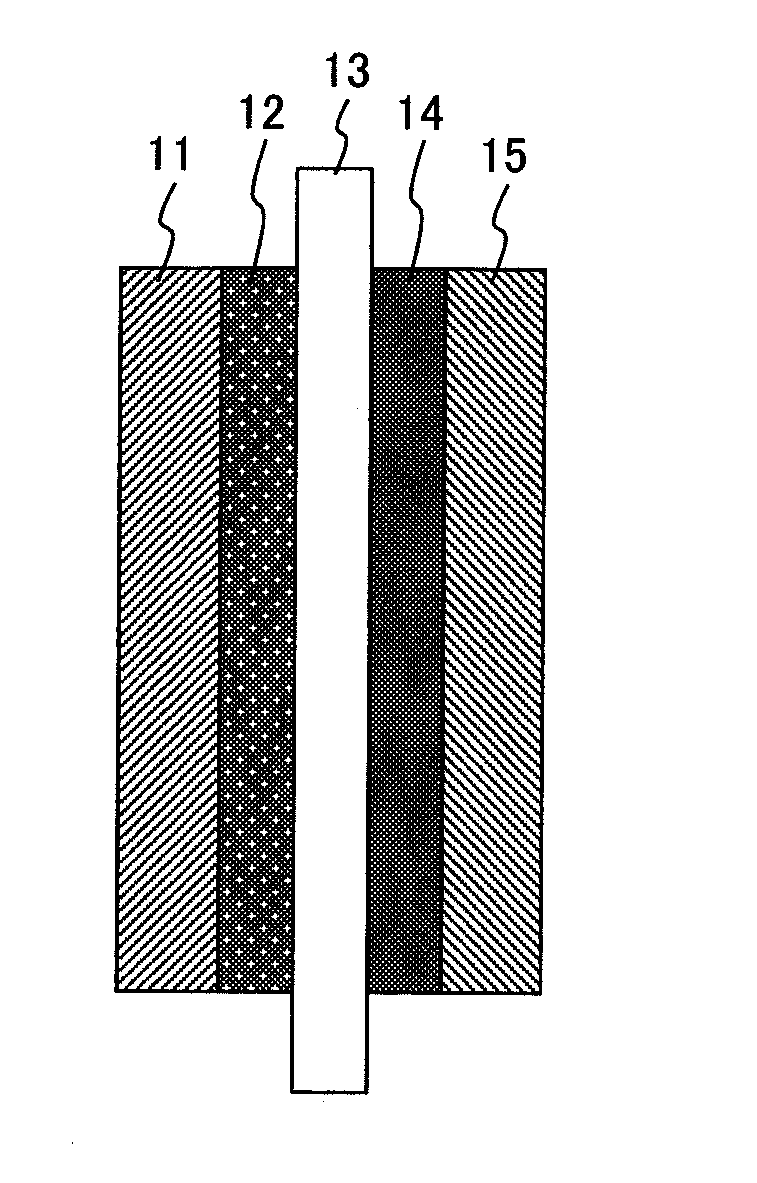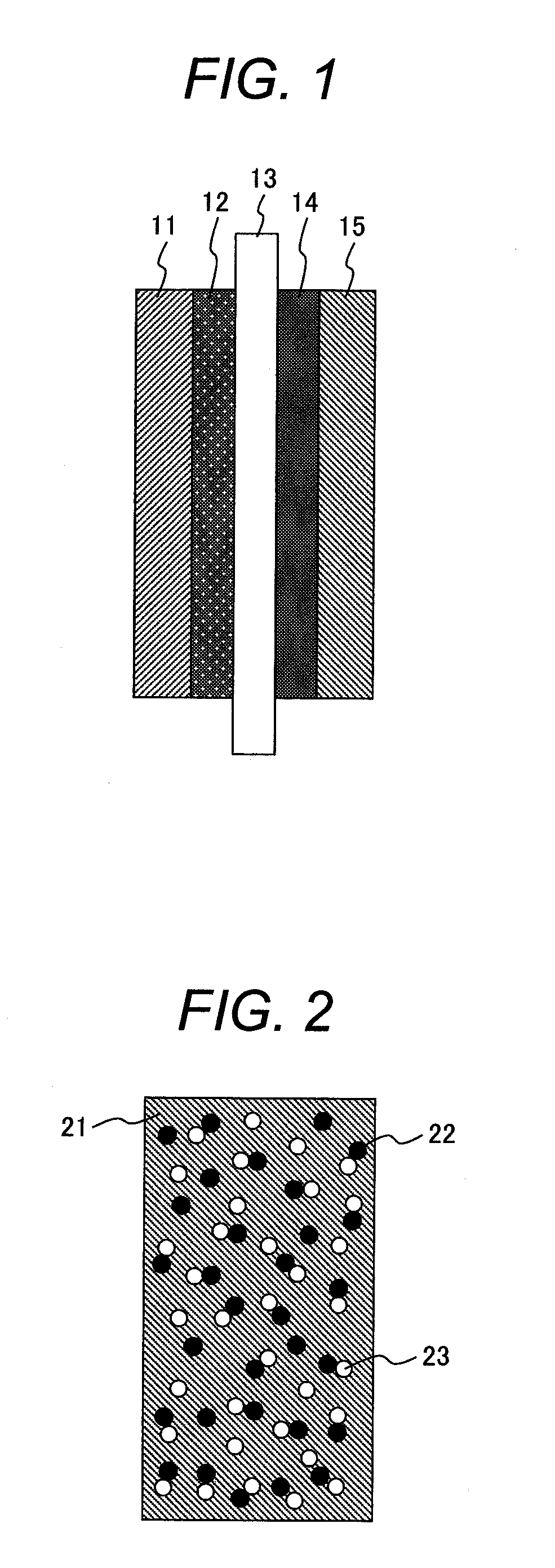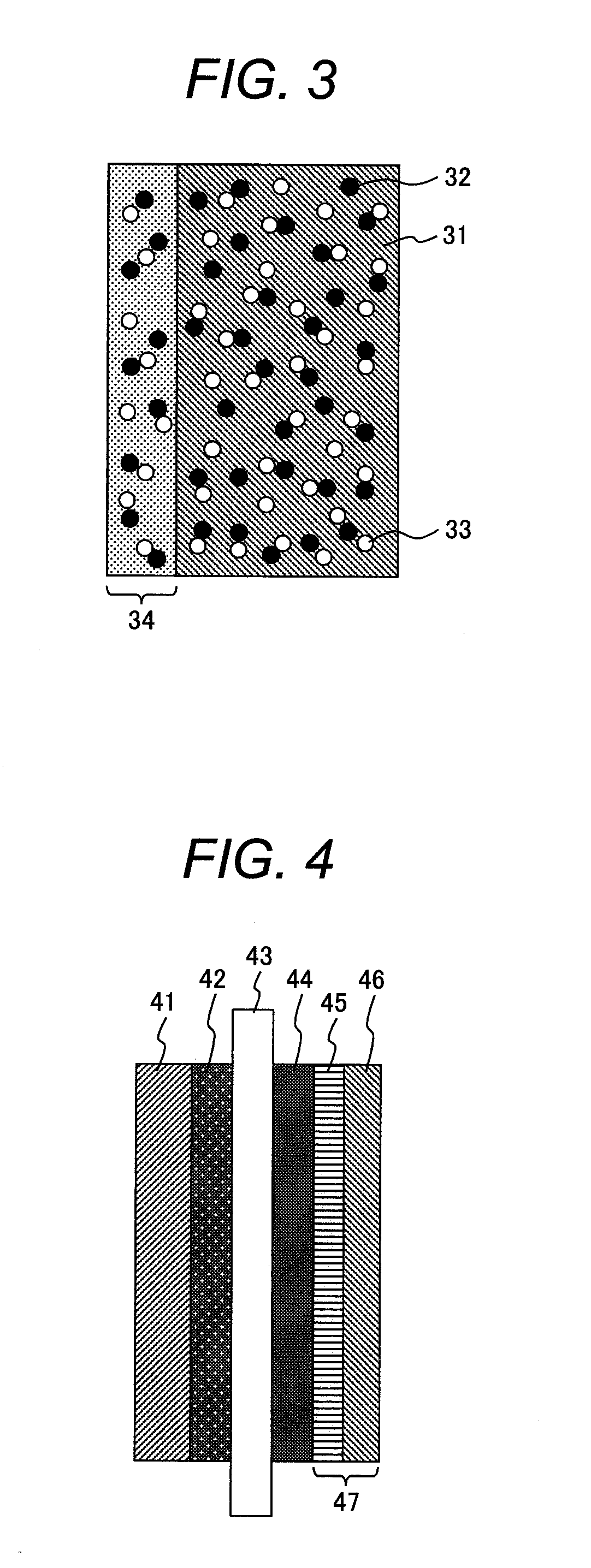Membrane electrode assembly for fuel cell
a fuel cell and membrane electrode technology, applied in the direction of fuel cells, solid electrolyte fuel cells, cell components, etc., can solve the problems of increasing power loss of auxiliary machines, difficulty in keeping the effect of removing hazardous materials for a long time, and so as to achieve the effect of reducing the efficiency of the fuel cell system, increasing the capacity of blowers, and limited absorbent capacity
- Summary
- Abstract
- Description
- Claims
- Application Information
AI Technical Summary
Benefits of technology
Problems solved by technology
Method used
Image
Examples
example 1
[0057]In the present example, a membrane electrode assembly for a fuel cell configured as shown in FIG. 1 is produced.
[0058]Copper (II) chloride dihydrate that is a precursor compound of a hazardous material oxidation catalyst and polytetrafluoroethylene are added to ion-exchanged water containing a surfactant and mixed well, and thereafter the solution is contained in a sealable plastic bag.
[0059]Further, a carbon paper of 200 μm in thickness functioning as a base material is dipped therein, left stilly for one hour at room temperature, and thereby impregnated with the solution containing the copper chloride and the polytetrafluoroethylene. Successively, the carbon paper is taken out and dried for one hour at 120° C. in the atmosphere. Furthermore, the surfactant is removed by baking the carbon paper for one hour at 350° C. in the atmosphere. Thereafter a hazardous material oxidation catalyst comprising copper of a metallic state is formed by processing the carbon paper at 300° C. ...
example 2
[0062]A membrane electrode assembly for a fuel cell according to the present example is produced by the same method as Example 1 except that palladium (II) chloride is used as a precursor compound of a hazardous material oxidation catalyst in place of copper (II) chloride dihydrate used in Example 1 and a small amount of hydrochloric acid is added to the ion-exchanged water. It is possible to decrease hazardous materials emitted from a cathode in a cathode gas diffusion layer also by taking such a configuration.
example 3
[0063]In the present example, a membrane electrode assembly for a fuel cell having such a configuration as shown in FIG. 4 is produced.
[0064]Polytetrafluoroethylene is added into ion-exchanged water containing a surfactant, they are mixed well, and thereafter the solution is contained in a sealable plastic bag.
[0065]Further, a carbon paper of 100 μm in thickness is dipped therein, left stilly for one hour at room temperature, and thereby impregnated with the solution containing the polytetrafluoroethylene. Successively, the carbon paper is taken out and dried for one hour at 120° C. in the atmosphere.
[0066]Furthermore, the surfactant is removed by baking the carbon paper for one hour at 350° C. in the atmosphere and thereby a first cathode gas diffusion layer 45 in a cathode gas diffusion layer 47 is obtained.
[0067]Successively, copper (II) chloride dihydrate that is a precursor compound of a hazardous material oxidation catalyst and polytetrafluoroethylene are added to ion-exchange...
PUM
| Property | Measurement | Unit |
|---|---|---|
| diameter | aaaaa | aaaaa |
| thickness | aaaaa | aaaaa |
| temperature | aaaaa | aaaaa |
Abstract
Description
Claims
Application Information
 Login to View More
Login to View More - R&D
- Intellectual Property
- Life Sciences
- Materials
- Tech Scout
- Unparalleled Data Quality
- Higher Quality Content
- 60% Fewer Hallucinations
Browse by: Latest US Patents, China's latest patents, Technical Efficacy Thesaurus, Application Domain, Technology Topic, Popular Technical Reports.
© 2025 PatSnap. All rights reserved.Legal|Privacy policy|Modern Slavery Act Transparency Statement|Sitemap|About US| Contact US: help@patsnap.com



